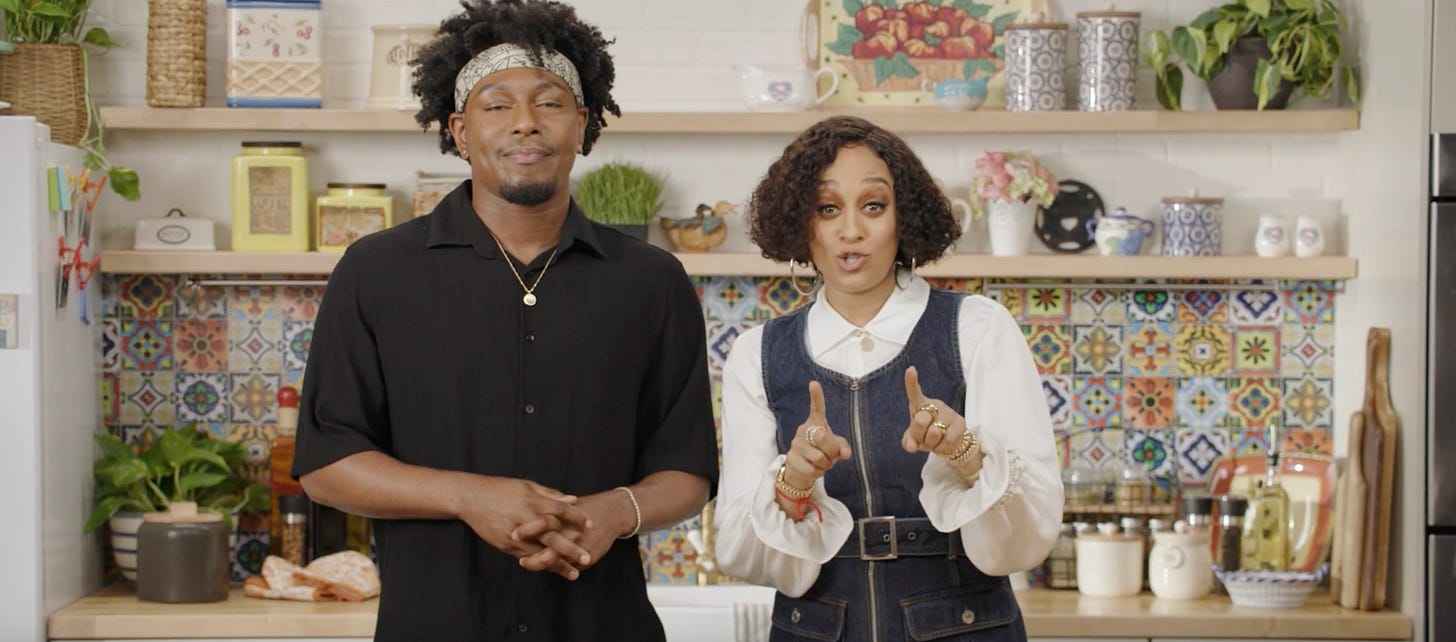Creators Are Coming To FAST. It Might Not Always Work.
CTV is not set it and forget it
Kin Community has been making lifestyle content for various digital platforms for nearly two decades.
An original part of the YouTube funded channels effort back in 2011, Kin has found its niche by tapping a mix of born-online creators and celebrities like Tia Mowry who are good at producing for community-driven digital platforms.
So when the chance came for Kin to bring its original, creator-centric series to connected TV, the company’s founder and CEO Michael Wayne jumped.
Two short years later - Kin’s foray into FAST was over. While not necessarily a cautionary tale, Kin’s experience could be viewed as a reality check for the slew of creators flocking to the still-surging, yet increasingly-crowded FAST sector.
“We were approached by Roku and a couple other folks to stand up a channel,” said Wayne on my Next in Media podcast this week. In 2022, Kin was one of 270 FASTs on Roku. “While it was fun to see a Kin linear, 24/7 channel on Roku, what we found was…it’s not insignificant the amount of people and resources and just mind space you need to dedicate to make a FAST channel successful and monetize it profitably.”
So if you’re a creator thinking, ‘here’s an easy check,’ well, not necessarily.
Second, there are a lot of Fast channels. A few thousand, based on several estimates. And suddenly, a whole lot of creators distributing in this world. It’s an area where it’s quite easy to get lost, or even have your brand subsumed by one of the existing FAST channels (or a programming block, such as Vizio’s “Fork and Flight.”)
“We’re an IP business,” said Wayne. When I hear IP, my mind goes toward Marvel or Star Wars, but really, any creator that is looking to establish a brand and maybe even content franchise, cares about IP.
“So us having a channel where we’re putting all of our IP through started to limit or at least reflect not so positively on maybe some of the distribution deals we were trying to cut.”
One of the issues with FAST channels bringing more YouTubers on board is - their content is already all over YouTube, which is increasingly being viewed on TVs. Plus, some in the industry suspect that while FAST channels may draw in super fans of genres or particular shows, lifestyle content just doesn’t stand out.
Recognizable content brands really matter, insiders say, and a deep library seems a must - which gives an advantage to old fashioned TV studios (there are 635 episodes of “Gunsmoke” just sitting there, for example). Not every digital creator can play in that neighborhood.
It also might cost creators a few bucks to get a FAST off the ground. As Jim Louderback, author of Inside the Creator Economy, explained, “one of the problems with FAST and other channels is that for many YouTubers they don’t own the rights to some of the audio (and other elements) in their videos. If you want to do a FAST channel or you want to license to one – like Pluto or Tubi – you have to make sure your content is squeaky clean.”
In addition, from an ad revenue perspective, the FAST sector feels like it’s in a bubble. As a result, a channel culling is underway, according to The Information.
Yet that is not stopping creators from coming to CTV in big numbers.Top YouTuber Dhar Mann talked about what drove his new deal with Samsung on my podcast a few weeks ago
“There’s a certain nostalgia that exists [for TV], there’s just a certain excitement that comes to being on a platform that you grew up watching,” he said. “I have personally experienced this, when I try to describe to people what I do that don’t know who I am. I’m like, ‘yeah, I create scripted content, we have this size studio, we have this many team members, we put out this much content.’ And then they go, ‘well, where does your content exist?’ And I say, ‘YouTube,’ they immediately check out. ‘You’re just a YouTuber.’”
With FAST, “There are more ways we can reach audience members to move them with our mission,” he said. “And obviously there is the revenue diversification.”
Maybe not for everyone at this stage, especially when there are more direct distribution deals to be had for some creators.
“From what I understand people do make a lot of money now,” said Wayne. “I don’t think they make a lot of money compared to probably their streaming distribution channels and their network deals.”
“There is still a lot of maturation, I think from our standpoint that the FAST business needs to kind of go through. So we just didn’t think that juice was worth the squeeze at the end of the day.”


